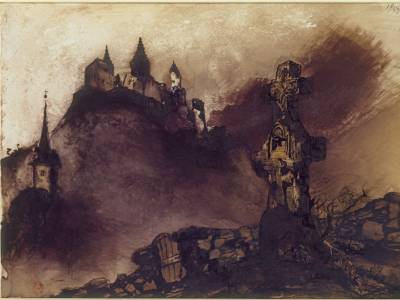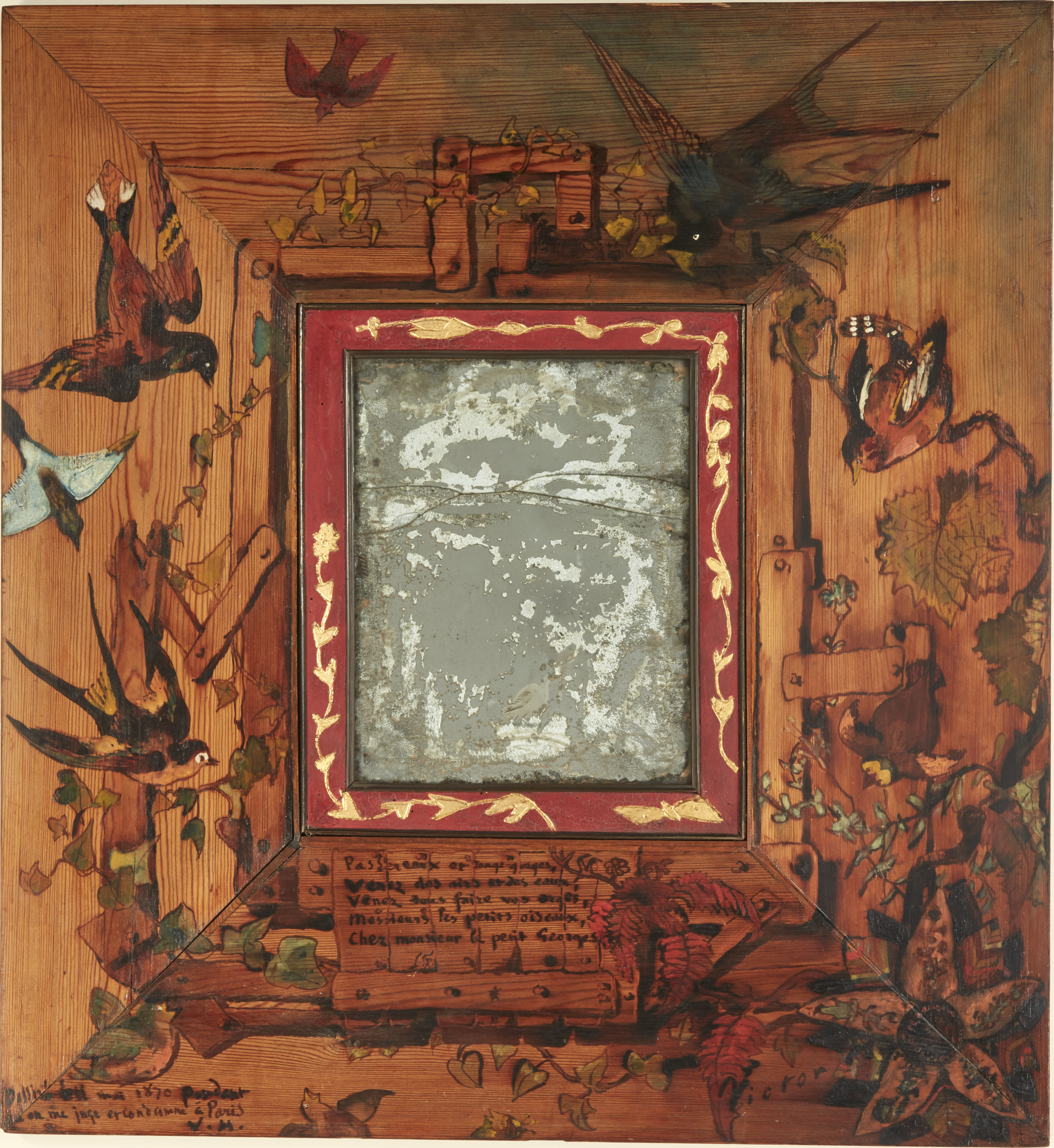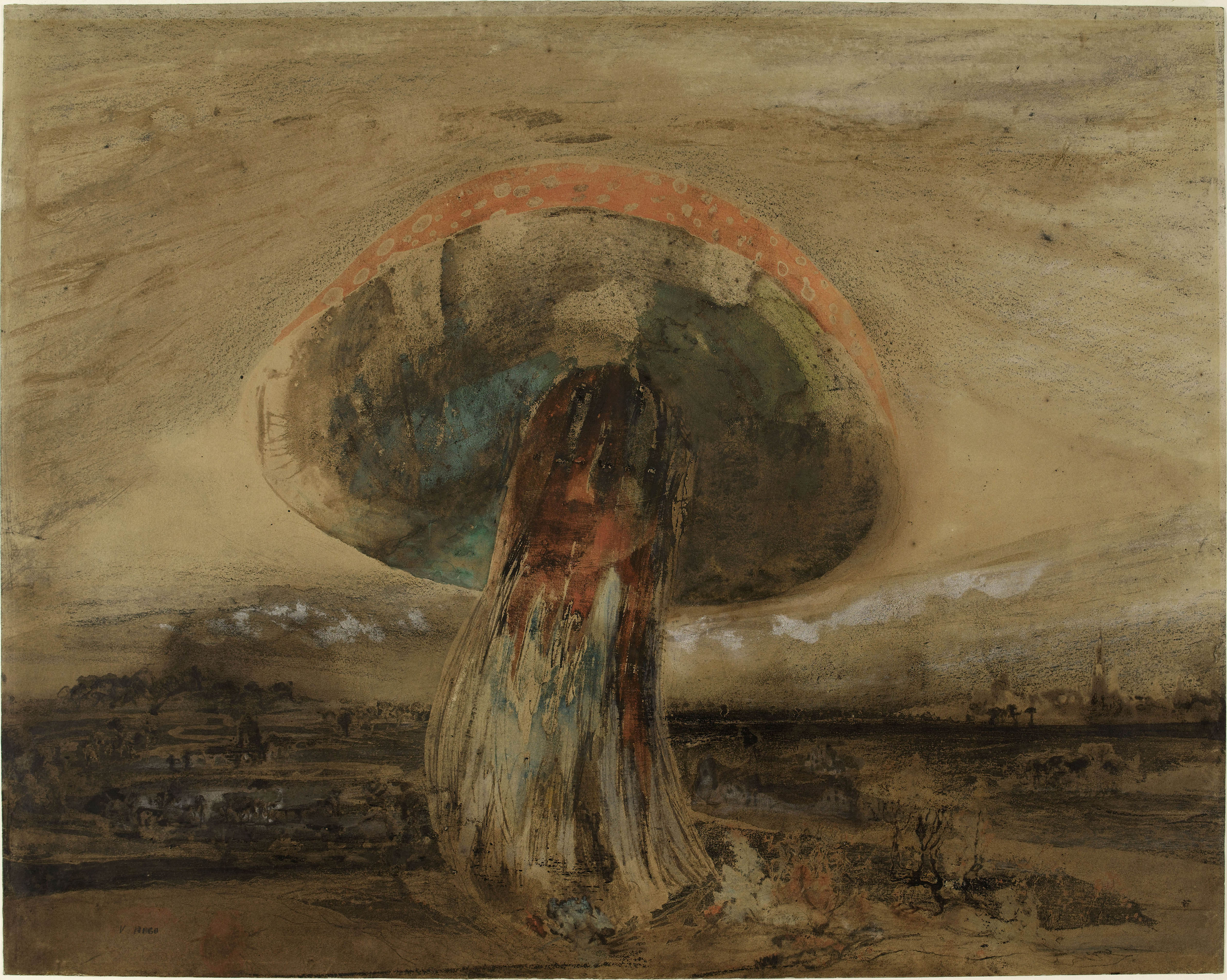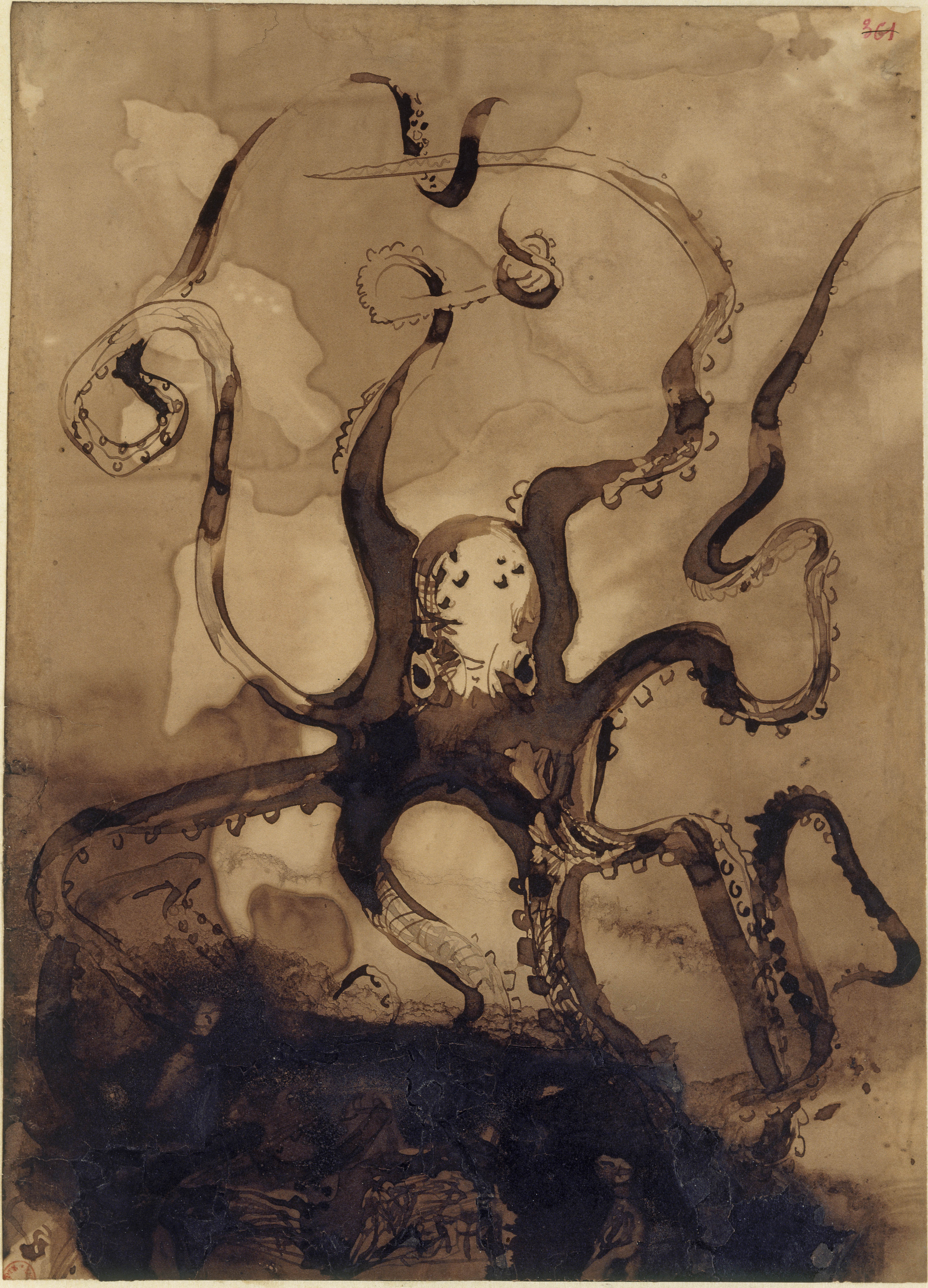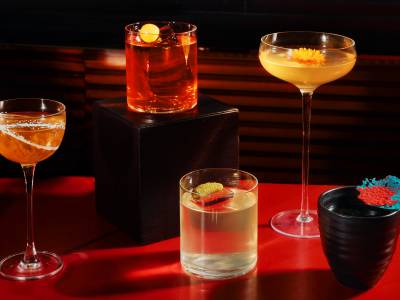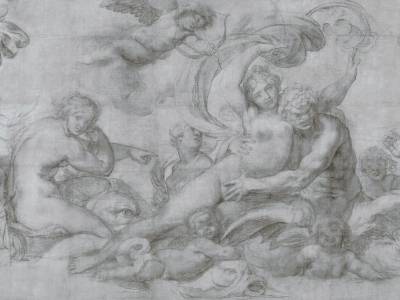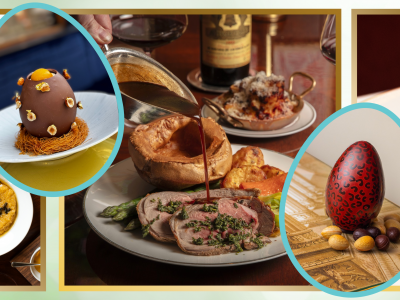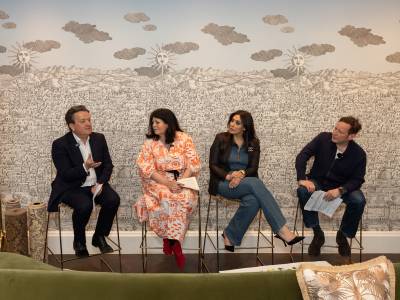"These things people insist on calling my drawings... made in the margins or on the covers of manuscripts during hours of almost unconscious reverie with what remained of the ink in my pen." Victor Hugo, 1863.
The Royal Academy of Arts' latest exhibition, running until June 29th, offers a rare glimpse into Victor Hugo’s lesser-known artistic pursuit—drawing. The exhibition showcases around 70 works from Hugo’s collection of over 4,000 drawings. The works’ materials are as diverse as their motifs, from ink and charcoal to lace imprints and wood shavings, depicting everything from coastal lines to octopuses and mushrooms. No matter the subject, nearly all pieces have a signature muted psychedelic-washed brown look.
